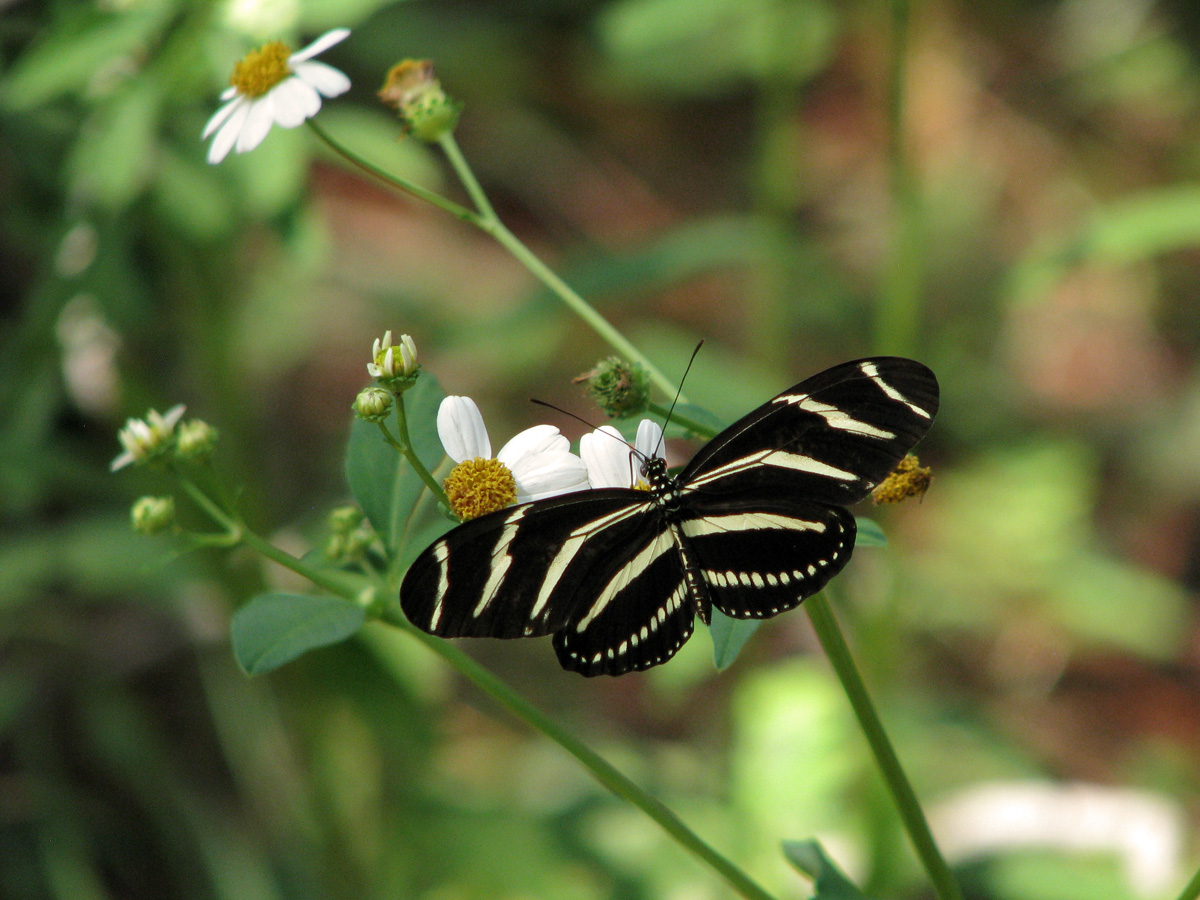Bloom Report: Spanish Needles – Nature’s Pollinator Magnet (and Laundry’s Worst Nightmare!)
Pictured above: Zebra longwing butterfly (Heliconius charithonia)on Beggarsticks (Bidens alba) by Peg Urban
The fall 2024 Bloom Report from Jeff Norcini, PhD
Florida is home to eight species of Bidens, all of which are commonly known as Spanish needles. Many of us have a love/hate relationship with Bidens — we love how attractive their nectar is to many species of butterflies and bees, but are annoyed when our clothes (or our dogs!) resemble a well-stocked pin cushion after coming in contact with these plants. Why does this happen? All Bidens species have seeds (technically a type of fruit called an achene) that are easily dislodged and bear two to five barbed prongs on their tips. The barbs (think harpoon) result in the seeds easily embedding in clothing and animal fur, which aids in dispersal.
All but one Bidens species found in Florida are native (although the native status of Bidens alba is in question). Below are the four species most likely to be seen in natural areas and parks and along roadsides. Common names other than Spanish needles or Beggarticks are noted.
Bidens is also commonly referred to as Beggarticks, and is closely related to Coreopsis, which is commonly known as Tickseed. The seeds of Bidens and many Coreopsis have been said to resemble ticks.
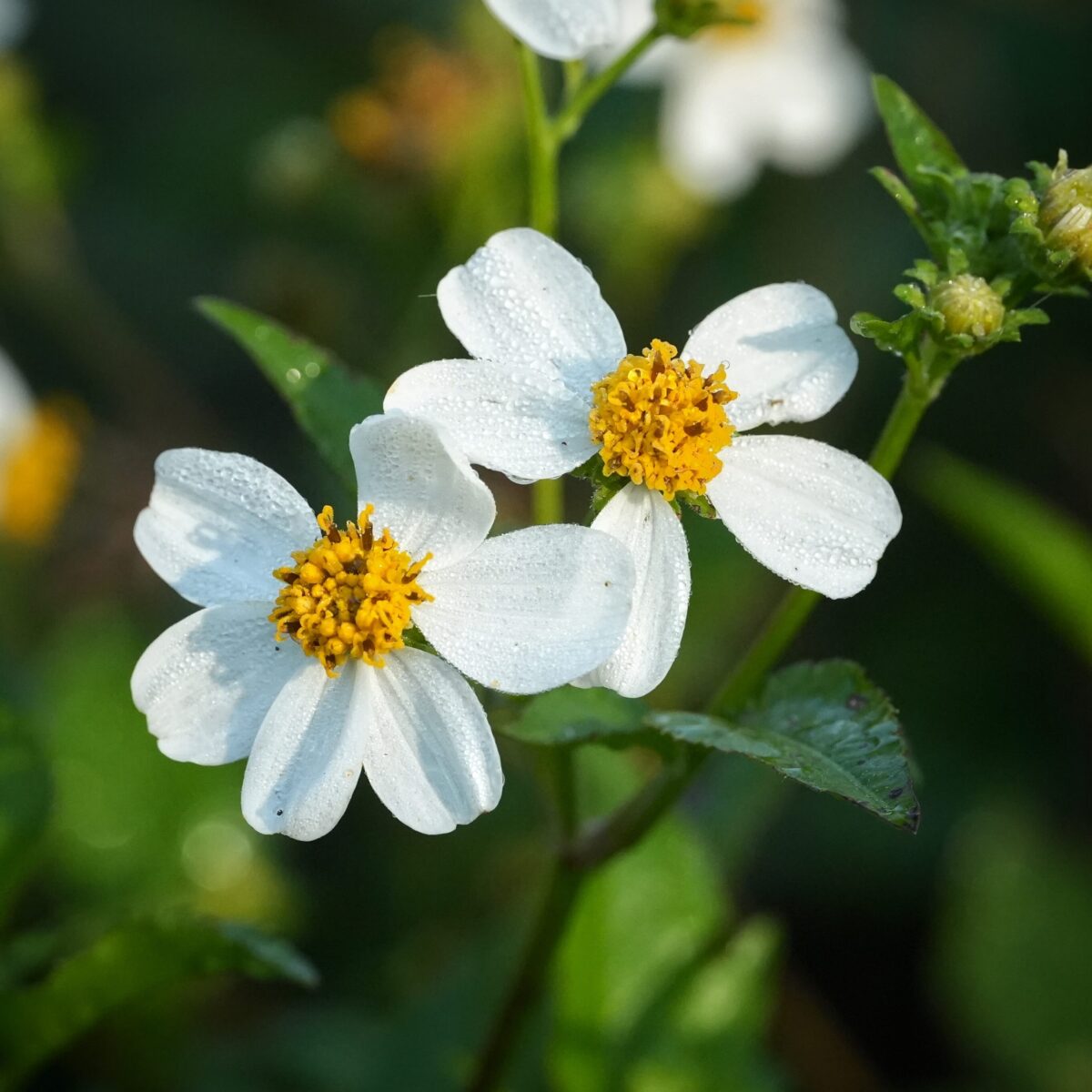
Photo by Emily Bell
- Other common names: Romerillo
- Range: The most ubiquitous Bidens in Florida, its range extends from the central Panhandle to south Central Florida. It is very common to disturbed sites, especially roadsides. Click here to see where natural populations occur.
- Growth habit: Up to 5 ft tall
- Flowers: Showy white petals, blooming mainly from summer to frost in the Panhandle, but can be year-round further south, especially in areas with no frosts/freezes
- Seed: Resembles a two-pronged pitchfork; prolific seed producer
- Lifespan: Annual in areas subject to frosts/freezes, short-lived perennial elsewhere
- Wildlife use: This plant is highly valued by beekeepers, who even inquire about buying seed! It is a larval host for the Dainty sulphur butterfly.
- Bidens alba is sometimes confused with the non-native Bidens pilosa, which is rare, and whose white petals, if present, are only 1/8th inch long.
- Additional resources: Biology and Management of Spanish Needles (Bidens spp.) in Ornamental Crop Production
- NOTE: There is growing evidence that this species may be introduced and not native to Florida and some sources list it as such.
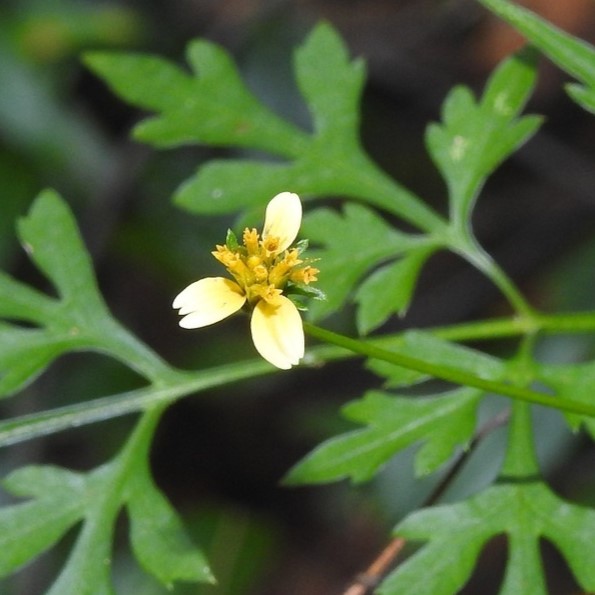
Photo by Mark Kenderdine CC BY-NC
Bidens bipinnata:
- Range: About the same range as Bidens alba; common to disturbed sites as well as floodplains. Click here to see where natural populations occur.
- Growth habit: Up to 5 ft tall
- Flowers: If present, have short, yellow petals; blooms mainly spring to fall
- Seed: Prongs number 3 to 4
- Lifespan: Annual
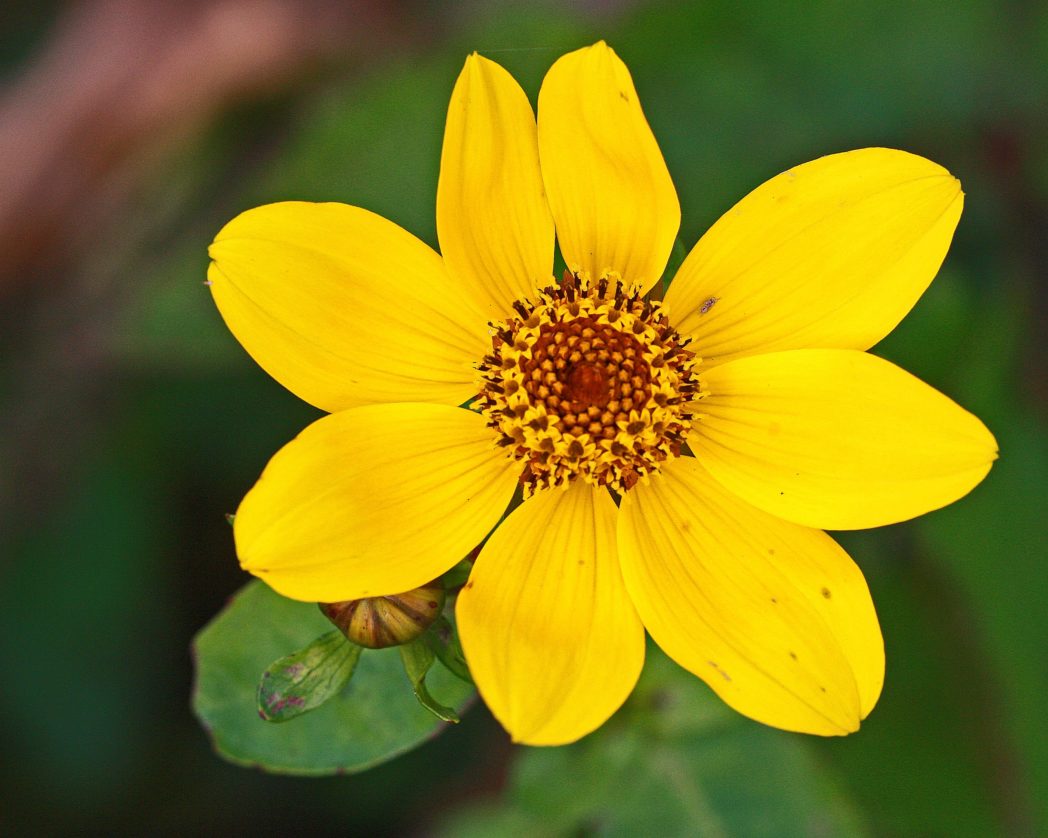
Photo by Mary Keim
- Other common names:Burmarigold, Burr marigold
- Range: Occurs statewide in moist to inundated areas. Click here to see where natural populations occur.
- Growth habit: Up to 5 ft tall
- Flowers: showy, bright yellow petals; blooms in fall, sometimes in large populations, which are spectacularly showy
- Seed: Prongs number 2 to 4
- Lifespan: Short-lived perennial
- Wildlife use: Larval host plant for the Dainty sulphur butterfly
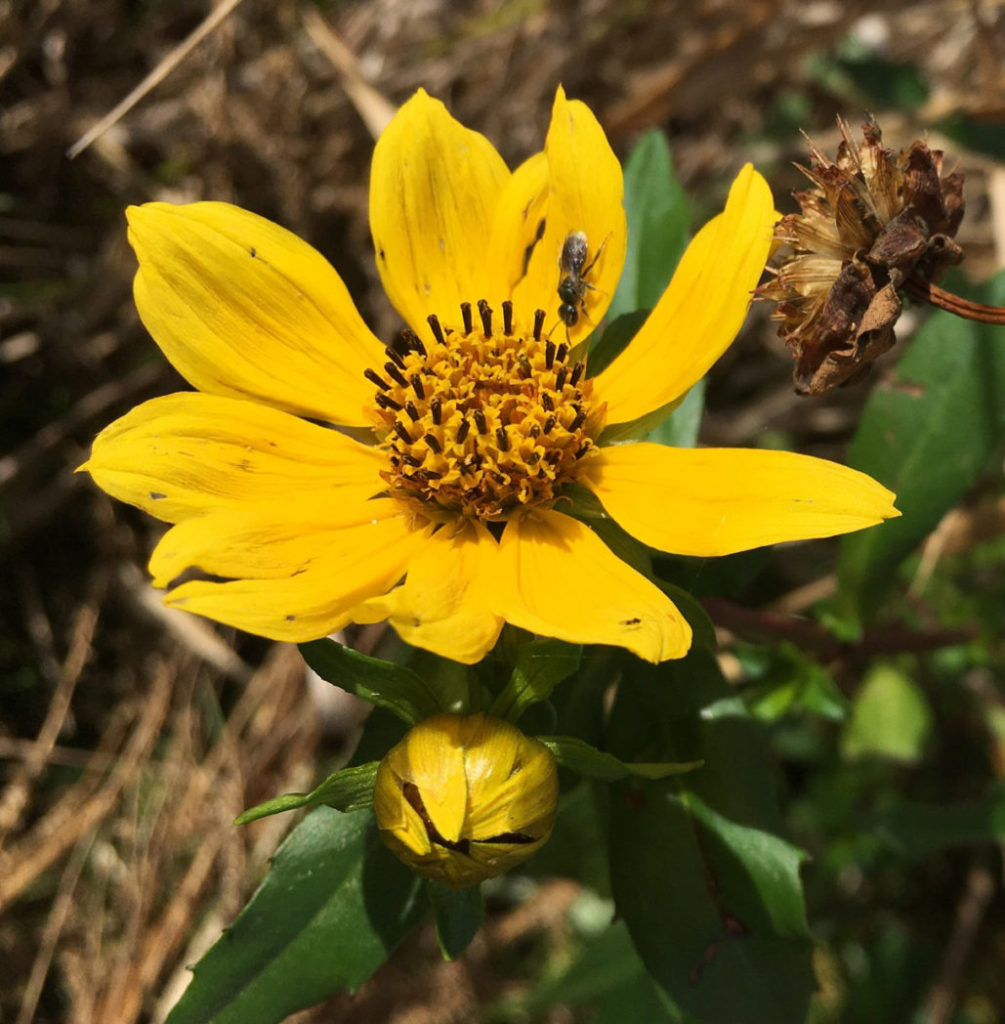
Photo by Grace Howell
- Other common names: Smallfruit beggarticks
- Range: Occurs statewide in moist to inundated areas. Click here to see where natural populations occur.
- Growth habit: Up to 3 ft tall
- Flowers: Showy, bright yellow petals; blooms mainly mid-summer and fall in the Panhandle to year-round in South Florida, sometimes in large populations, which are spectacularly showy
- Seed: Barbed prongs are short or absent
- Lifespan: Annual
- Wildlife use: Larval host plant for the Dainty sulphur butterfly
When you are out and about enjoying the fall beauty that Mother Nature has blessed us with, please don’t pick the wildflowers. If you want to preserve the memory of a wildflower, take a picture – it will last longer. Many of our native wildflowers reproduce only by seed. Picking a flower reduces the plant’s ability to reproduce and for that population of wildflowers to sustain itself. If you want to pick wildflowers, plant some in your yard or in containers on your patio or porch. Wildflower seed packets are available from the Florida Wildflower Growers Cooperative. Seed packets of Florida native wildflowers may also be available at garden centers specializing in Florida native plants. To find a native garden center near you, visit the Florida Association of Native Nurseries website.

